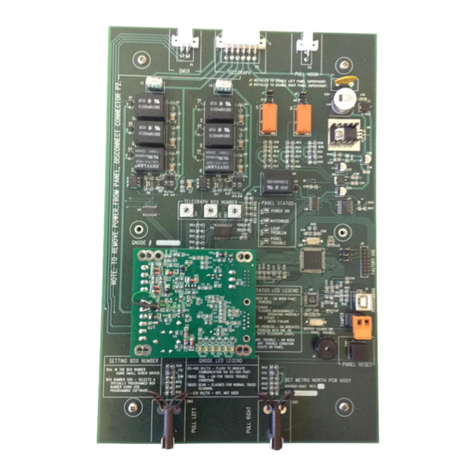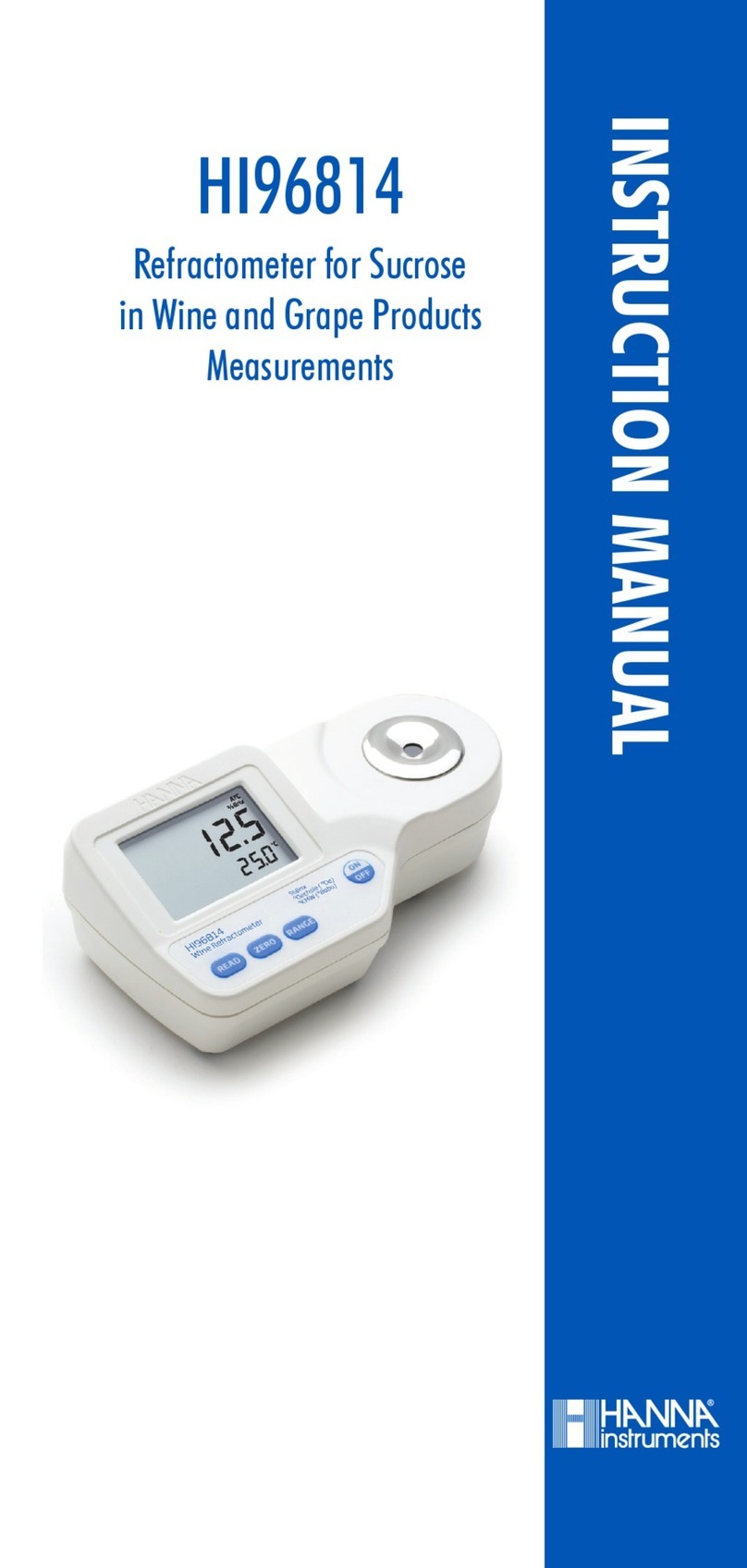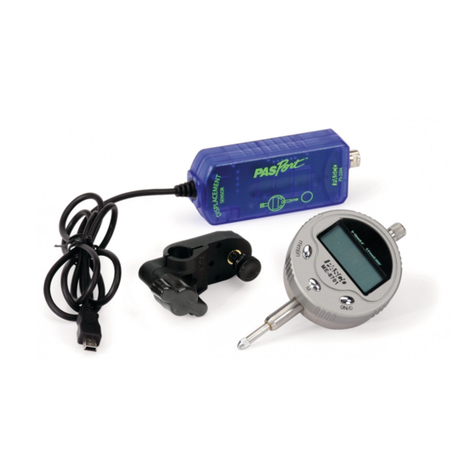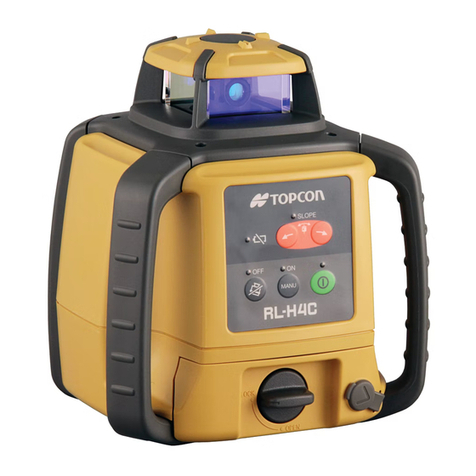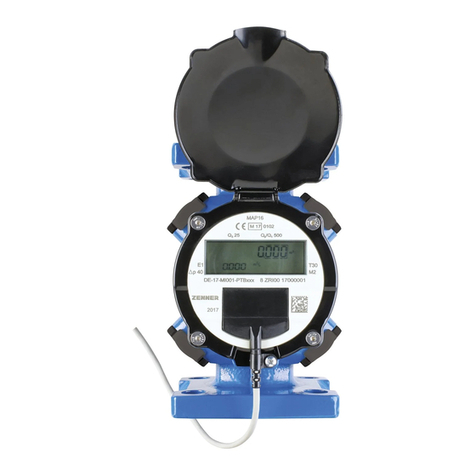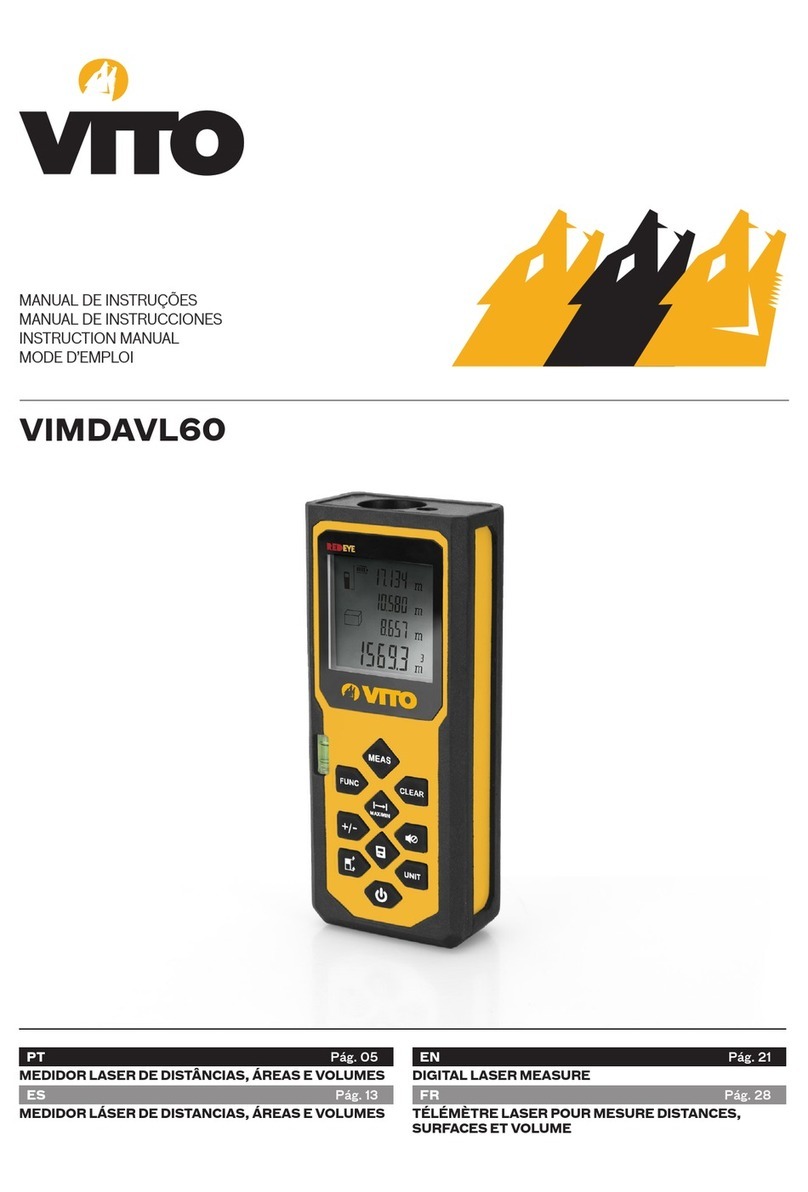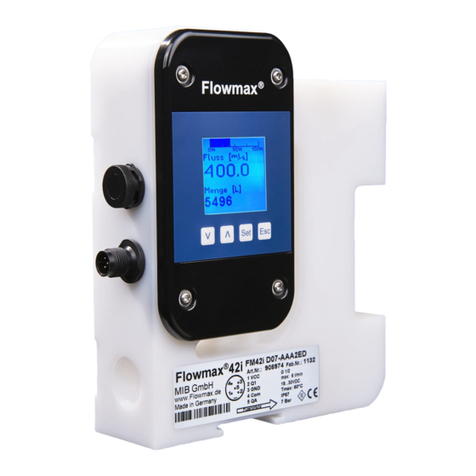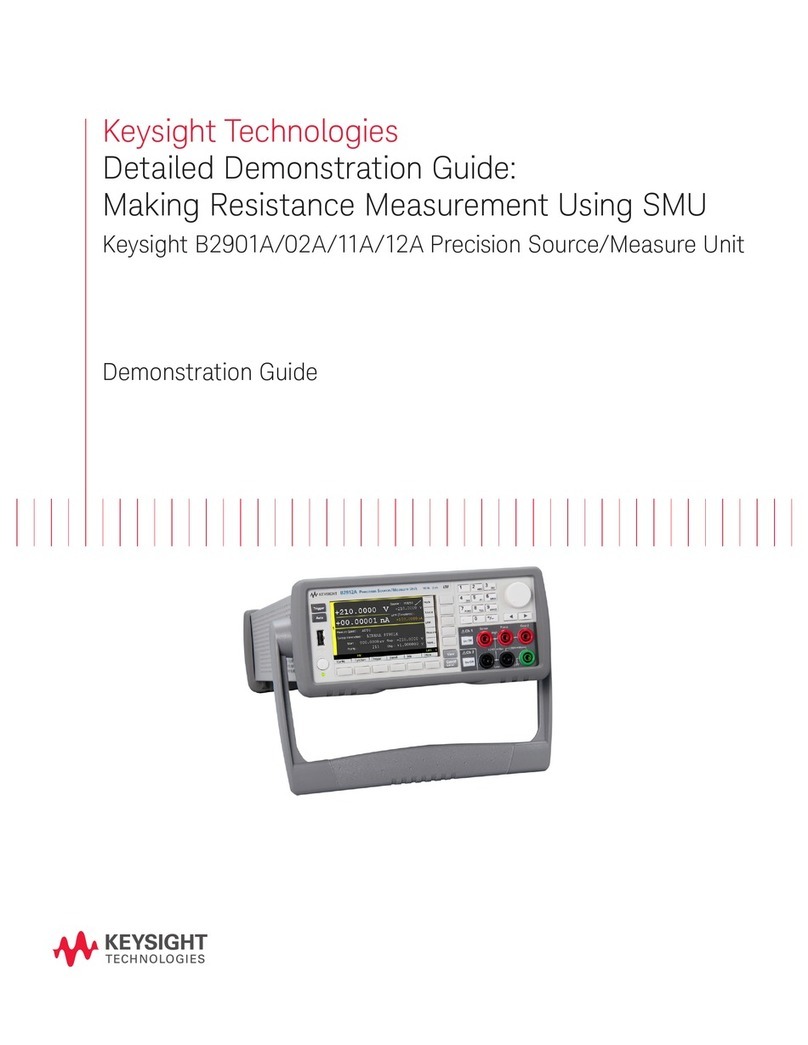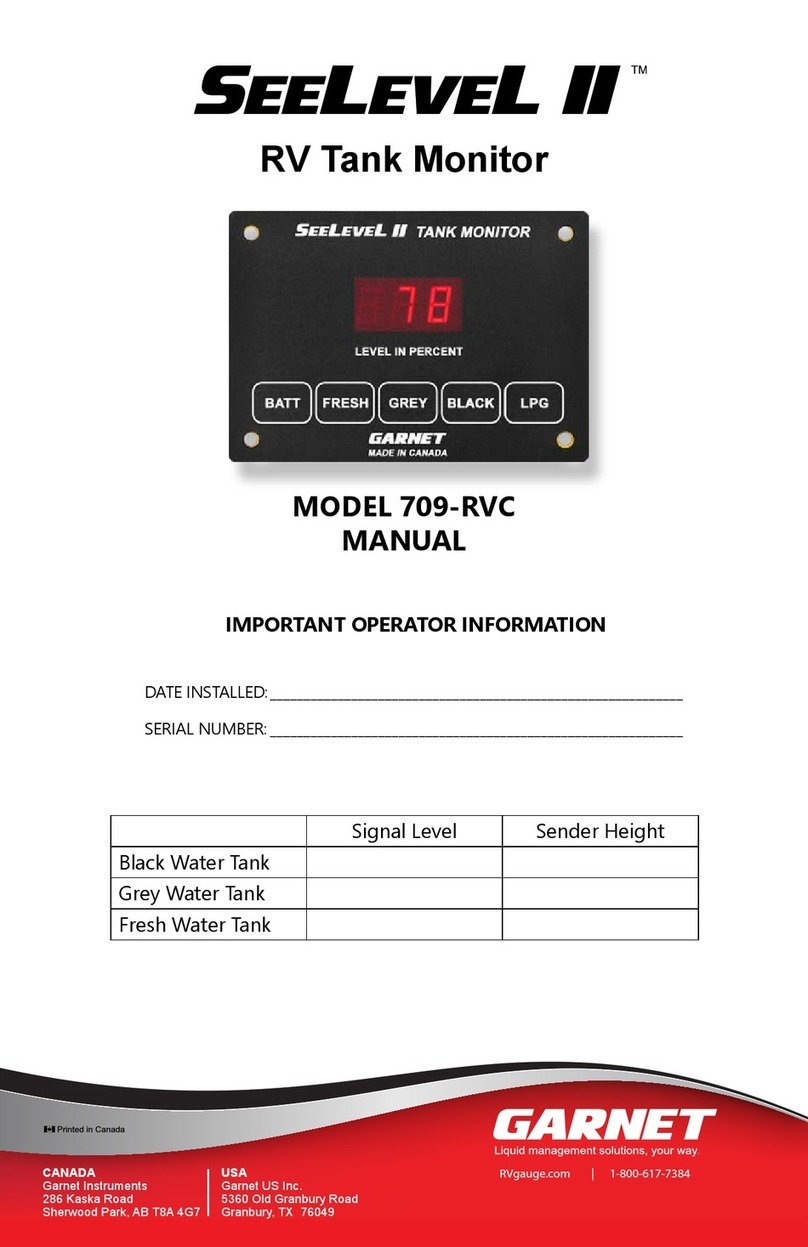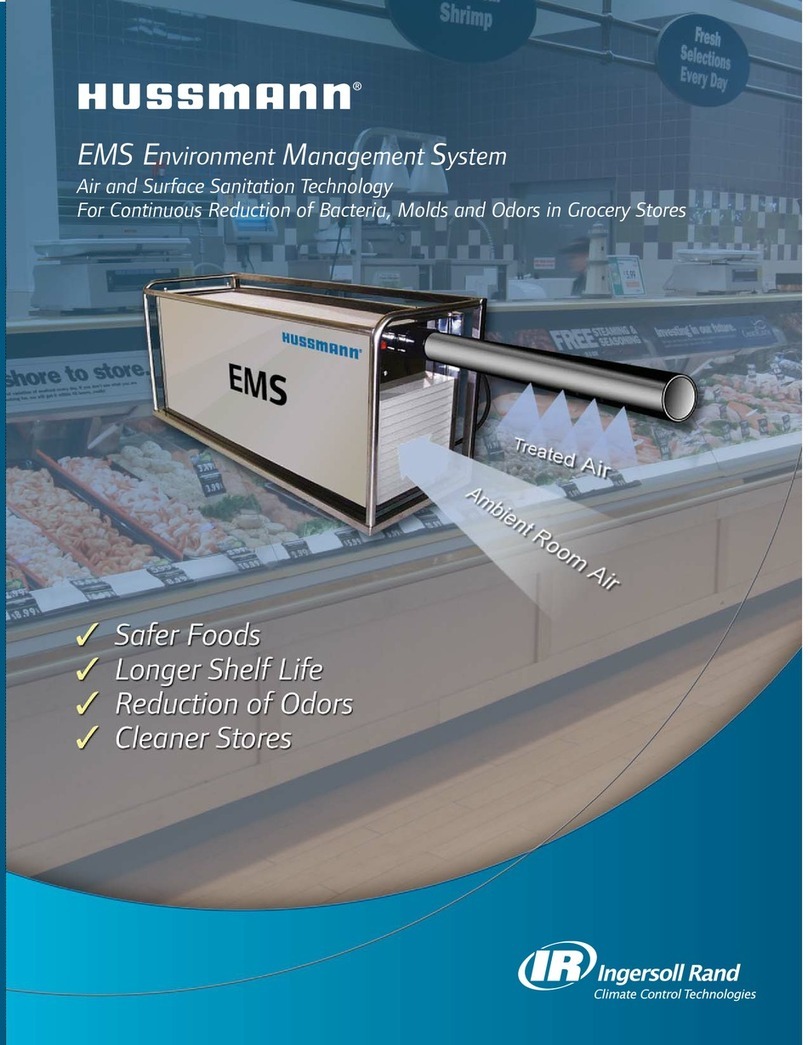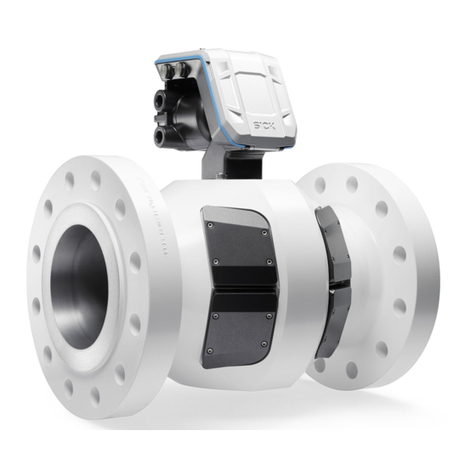DIGITIZE System 3505 User manual

System 3505
Installation & Operation Manual
Digitize, Inc.
158 Edison Road
Lake Hopatcong, NJ 07849
Tel: (97 )66 -1011
Fax: (97 )66 -4 Part Number: 700248-0002
E-Mail: info@digitize-inc.com Revision: C
Website : http://www.digitize-inc.com Issue Date: 02/16

TRADEMARKS
DIGITIZE (stylized) is a registered trademark of Digitize, Inc.
First ... When Seconds Count.
ISOdressable
CGRMS
Q-MUX
All of the above are trademarks of Digitize, Inc.
Any logos or product names mentioned in this document may be trademarks and are used for identification purposes
only.

PROPRIE ARY NO ICE
AND
DISCLAIMER
E-Mail: [email protected]
Website: http://www.digitize-inc.com
This manual has been prepared by DIGITIZE, INC. for use by its licensees, distributors and
customers. The information contained herein is the property of DIGITIZE, INC. and may not be
copied, disclosed or reproduced, in whole or in part, without the prior written approval of DIGITIZE,
INC. Any unauthorized disclosure to, or use of the enclosed information by, unauthorized third
persons shall void any and all representations, warranties and obligations on the part of DIGITIZE,
INC.
DIGITIZE, INC. reserves the right to make changes to the specifications and material contained
herein without prior notice. The information and/or examples (including, but not limited to circuitry,
wiring diagrams, programming, the operation or use shown) described in this manual are intended
solely to illustrate the operating principles of the particular product. They are not a warranty,
representation or guarantee that a particular example or use shown will perform in a particular
situation. They are given for illustration purposes only. DIGITIZE, INC. shall not be responsible, nor
does it represent, that any example of illustration will perform in a particular environment or practice
unless it specifically makes a representation to that effect.
The material set forth herein is for informational purposes only, and DIGITIZE, INC. assumes no
patent liability with respect to any information or illustrations contained herein.
750556-0000 REV A 10/07
DIGITIZE, INC.
158 Edison Road
Lake Hopatcong, New Jersey 07849- 17
U.S.A.
973-663-1011 FAX: 973-663-4333
ISO 9001

FCC NO ICE
In compliance with Paragraph 15.105 of the FCC Rules and Regulations, the
following notice is provided.
NOTE: This equipment has been tested and found to comply with the limits
for a Class A digital device, pursuant to Part 15 of the FCC Rules. These
limits are designed to provide reasonable protection against harmful
interference when the equipment is operated in a commercial environment.
This equipment generates, uses, and can radiate radio frequency energy, and,
if not installed and used in accordance with the instruction manual, may cause
interference to radio communications. Operation of this equipment in a
residential area is likely to cause interference, in which case the user will be
required to correct the interference at owner’s expense.

TABLE OF CONTENTS
1 GENERAL INFORMATION .................................................................................. 1-1
1.1 LISTING AND APPROVAL INFORMATION ............................................. 1-1
1.2 ANSI/UL 864 STANDARD & SYSTEM SETTINGS.................................... 1-1
1. SYSTEM DESCRIPTION ............................................................................... 1-2
1.4 SYSTEM 505 ................................................................................................. 1-2
1.5 ALARM TYPES .............................................................................................. 1-
1.6 DISPLAY ......................................................................................................... 1-
1.7 MEMORY ........................................................................................................ 1-4
1.7.1 MEM-600 Memory Chip ......................................................................... 1-4
1.8 SPECIFICATIONS .......................................................................................... 1-6
1.8.1 Electrical.................................................... Error! Bookmark not defined.
1.8.2 Fuses ......................................................................................................... 1-6
1.8. Inputs ........................................................................................................ 1-6
1.8.4 Outputs ..................................................................................................... 1-6
1.8.5 Construction ............................................................................................. 1-6
1.8.6 Dimensions ............................................................................................... 1-6
1.8.7 Weight ...................................................................................................... 1-6
1.8.8 Temperature and Humidity ...................................................................... 1-7
1.8.9 Strip Printer .............................................................................................. 1-7
1.8.10 Display ..................................................................................................... 1-7
1.8.11 Keypad ..................................................................................................... 1-7
1.9 FCC REQUIREMENTS .................................................................................. 1-7
1.10 TROUBLE REMINDER.................................................................................. 1-8
1.11 APPLICABLE PUBLICATIONS .................................................................... 1-8
2 INSTALLATION ..................................................................................................... 2-1
2.1 HANDLING ..................................................................................................... 2-1
2.1.1 Unpacking and Inspection ........................................................................ 2-1
2.2 INSTALLATION PROCEDURE .................................................................... 2-1
2.2.1 Field Wiring ............................................................................................. 2-1
2.2.2 Font Selections ......................................................................................... 2-1
2.2. Edit Mode Selection ................................................................................. 2-2
2.2.4 Set Display Order ..................................................................................... 2-
2.2.5 Printer Alarm ............................................................................................ 2-
2.2.6 Changing the Thermal Paper .................................................................... 2-4
SYSTEM INITIALIZATION .................................................................................. -1
.1 GENERAL ....................................................................................................... -1
.2 ASSEMBLY..................................................................................................... -1
. BATTERY INSTALLATION ......................................................................... -1
.4 POWER-UP ..................................................................................................... -1
.4.1 AC Power ................................................................................................. -1
.4.2 DC Power ................................................................................................. -1
.4. Power Transfer ......................................................................................... -1
.5 PROGRAM INITIALIZATION ...................................................................... -2
.6 CONNECTIONS AND SETTINGS ................................................................ -
4 USER TEXT ............................................................................................................ 4-1
4.1 USING THE EXTERNAL KEYBOARD ....................................................... 4-1

4.1.1 General ..................................................................................................... 4-1
4.1.2 Control & Function Keys ......................................................................... 4-2
4.1. Access....................................................................................................... 4-2
4.2 EXTERNAL KEYBOARD MENU SELECTIONS ........................................ 4-2
4.2.1 ZONE/MUX Menu .................................................................................. 4-
4. USER TEXT TYPES ....................................................................................... 4-5
4. .1 Generic ..................................................................................................... 4-8
4. .2 Control Panel Text ................................................................................... 4-8
4. . Account Specific ...................................................................................... 4-8
4. .4 Changing Zone Text ................................................................................. 4-8
4. .5 Deleting Zone Text................................................................................... 4-9
4. .6 Digital Dialer Menu ................................................................................. 4-9
4. .7 Radio Telegraph Menu ........................................................................... 4-10
4. .8 Round Menu ........................................................................................... 4-10
4. .9 SST Menu ............................................................................................... 4-10
4. .10 Password Menu ...................................................................................... 4-11
4. .11 Exit Data Entry Mode ............................................................................ 4-12
4. .12 Total Pages Installed, Used, and Deleted ............................................... 4-12
5 FRONT PANEL ACCESS ....................................................................................... 5-1
5.1 OVERVIEW..................................................................................................... 5-1
5.2 SETTING TIME & DATE ............................................................................... 5-
5. TEXT MSG & PASSWORDS ......................................................................... 5-
5.4 SOUND SYSTEM ........................................................................................... 5-
5.5 THERMAL PRINTER INTENSITY PRINTING MODES ............................ 5-4
5.6 SERIAL PORT COMMUNICATIONS........................................................... 5-5
5.7 IN/OUT SERVICE, PASSWORD, PRIORITY LEVEL ................................. 5-6
5.7.1 Changing Priority Level Descriptor ......................................................... 5-6
5.7.2 IN/OUT Service Password ....................................................................... 5-7
5.8 SOLID-STATE TELEGRAPHIC TRANSMITTER OPTION ....................... 5-7
5.9 RADIO BOX OPTION SETUP ....................................................................... 5-8
5.10 1221 RAD TEST BOX OPTION ..................................................................... 5-1
5.11 STATUS PRINTOUT SETUP MODE ............................................................ 5-
5.12 DAY/NIGHT OPTION SET UP MODE ......................................................... 5-4
5.1 ADDRESSABLE LINE PRINTER OPTION SET UP MODE ....................... 5-5
5.1 .1 Printer Supervision ................................................................................... 5-5
5.14 ALPHA NUMERIC PAGER SETUP .............................................................. 5-5
5.15 SLEEP/AWAKE SELECT OPTION ............................................................... 5-6
5.16 TELEGRAPH/DIGITAL DIALER AUTO CLEAR SETUP .......................... 5-7
5.17 5.24V BATT SUPERVISION.......................................................................... 5-8
5.18 DIRECT WIRE DELAY SETUP .................................................................... 5-9
5.19 PPO-64 POINT OUTPUT OPTION SETUP ................................................... 5-9
5.20 ALARM/TROUBLE RELAY SETUP ......................................................... 5-10
5.21 HOW TO PROCESS TELEG OPTION SETUP ........................................... 5-11
5.22 1221 RAD @X OPTION SETUP ................................................................. 5-12
6 OPERATION ........................................................................................................... 6-1
6.1 CONTROLS ..................................................................................................... 6-1
6.1.1 PAPER ADVANCE Button ..................................................................... 6-1

6.1.2 PRINT Button .......................................................................................... 6-1
6.1. KEY SELECT Button .............................................................................. 6-1
6.1.4 BOX LOOK UP Button ........................................................................... 6-1
6.1.5 DIALER LOOK UP Button ..................................................................... 6-1
6.1.6 ZONE LOOK UP Button ......................................................................... 6-2
6.1.7 Numeric Keys ........................................................................................... 6-2
6.1.8 CLEAR Button ......................................................................................... 6-2
6.1.9 Hyphen (-) Button .................................................................................... 6-2
6.1.10 FUNC Button ........................................................................................... 6-2
6.1.11 SET Button ............................................................................................... 6-
6.1.12 ON / ↑ Button ........................................................................................... 6-
6.1.1 OFF/ ↓Button ........................................................................................... 6-
6.1.14 ACK Button.............................................................................................. 6-
6.1.15 IN/OUT Service ....................................................................................... 6-
6.1.16 Shift Key ( ) .............................................................................................. 6-4
6.1.17 Status ........................................................................................................ 6-5
6.1.18 Report Key ............................................................................................... 6-5
6.2 PROGRAMMABLE KEYS ............................................................................. 6-5
6.2.1 History ...................................................................................................... 6-5
6.2.2 Next Page History .................................................................................... 6-5
6.2. Load SST Box Fast .................................................................................. 6-5
6.2.4 Load SST Box Slow ................................................................................. 6-5
6.2.5 Transmit SST Fast .................................................................................... 6-6
6.2.6 Transmit SST Slow .................................................................................. 6-6
6.2.7 Stop SST Transmit ................................................................................... 6-6
6.2.8 All Out 22, 22+BX ................................................................................... 6-6
6.2.9 Relay Lookup ........................................................................................... 6-6
6.2.10 Status Printout .......................................................................................... 6-6
6.2.11 Print Set Report ........................................................................................ 6-6
6.2.12 Abort Print Set .......................................................................................... 6-6
6.2.1 FACP Faults ............................................................................................. 6-6
6. INDICATORS .................................................................................................. 6-7
6. .1 AC Power ................................................................................................. 6-7
6. .2 Condition Indicator .................................................................................. 6-8
6. . Clear ......................................................................................................... 6-8
6. .4 ACK ......................................................................................................... 6-8
6. .5 Alarm Indicator ........................................................................................ 6-8
6.4 OPERATING PROCEDURE .......................................................................... 6-8
6.4.1 Priorities ................................................................................................... 6-8
6.4.2 Normal Quiescent Operation .................................................................... 6-9
6.4. Alarm Condition ....................................................................................... 6-9
6.4.4 Trouble Condition .................................................................................... 6-9
6.4.5 Taking a Zone Temporarily Out of Service ........................................... 6-10
6.4.6 Removing a Digital Dialer from Service................................................ 6-10
6.4.7 Initiating Status Printout for Non-Secure Zones .................................... 6-10
6.4.8 Checking Status/Message of Individual Zone ........................................ 6-10
6.4.9 Message Display for a Telegraph or Dialer ........................................... 6-11

6.4.10 Changing the Paper Tape ....................................................................... 6-11
6.4.11 Serial Output from the System 505 ...................................................... 6-11
7 DDI-9E & DDI-10E COMMUNICATOR RECEIVER CARDs ............................ 7-1
7.1 OVERVIEW..................................................................................................... 7-1
7.1.1 DDI-10E Setup ......................................................................................... 7-2
7.2 DDI-9E OPTION SETUP ................................................................................ 7-
7.2.1 Caller ID ................................................................................................... 7-
7.2.2 Contact ID ................................................................................................ 7-4
7.2. MEM-ID ................................................................................................... 7-4
7.2.4 Powering the DDI-9/10E .......................................................................... 7-4
7.2.5 RS-2 2 Serial Port .................................................................................... 7-4
7.2.6 Parallel Printer .......................................................................................... 7-5
7. DDI-9/10E Dialer Set-Up................................................................................. 7-5
7. .1 Password................................................................................................... 7-5
7. .2 Configuration Menu ................................................................................. 7-5
7. . Pulse Dialer Format Primer ...................................................................... 7-7
7.4 Configuration Tables ........................................................................................ 7-9
7.4.1 Translate Alarm Codes to Zones .............................................................. 7-9
7.4.2 Set English Equivalents .......................................................................... 7-12
7.4. Opening and Closing (English Message) ............................................... 7-12
7.4.4 Data Loss (English Message) ................................................................. 7-12
7.4.5 No Cust # ................................................................................................ 7-1
7.4.6 ADD/CHANGE/DELETE CUST (Subscriber) ..................................... 7-1
7.4.7 Copy Configurations .............................................................................. 7-15
7.4.8 Convert SIA Accounts to CID ............................................................... 7-15
7.4.9 Various Setup Selections ........................................................................ 7-16
7.4.10 Force a Daily Test for Various Codes .................................................... 7-17
7.4.11 Rings to Answer Phone .......................................................................... 7-17
7.4.12 On the Fly Zone Conversion .................................................................. 7-18
7.4.1 Sort Customer in Order and Exit ............................................................ 7-18
7.4.14 Handshake Selection .............................................................................. 7-18
7.4.15 DDI-9E LED Indicators ......................................................................... 7-19
7.5 Redundant Operation...................................................................................... 7-19
7.6 FCC Information ............................................................................................ 7-20
English Equivalent Worksheet ............................................................................ 7-21
7.7 Dialer Look-up ............................................................................................... 7-24
8 Q-MUX MULTIPLEX SYSTEM ............................................................................ 8-1
8.1 OVERVIEW..................................................................................................... 8-1
8.2 Q-MUX OPTION SET UP .............................................................................. 8-1
8.2.1 1=ADD/CHG/DEL ID ............................................................................. 8-
8.2.2 = SET USE TAMPER ............................................................................ 8-
8. INSTALLATION ............................................................................................. 8-4
8. .1 Q-MUX Node Installation (P/N 425190-0001) ....................................... 8-4
8. .2 Q-MUX Module Installation .................................................................... 8-4
8.4 Q-MUX @ COMMANDS ............................................................................... 8-4
8.4.1 Coded Output Capability .......................................................................... 8-4
8.4.2 Relay Control ........................................................................................... 8-5

9 DIGITIZE COMPUTER INTERFACE OPTIONS ................................................. 9-1
9.1 OVERVIEW..................................................................................................... 9-1
9.2 CAPS II: SYSTEM 505 AUTOMATION INTERFACE .............................. 9-1
9.2.1 General Information ................................................................................. 9-1
9. CAPS-II OUTPUT SETUP .............................................................................. 9-1
9. .1 CAPS II OUTPUT SETTINGS................................................................ 9-2
9. .2 Priority Level............................................................................................ 9-
9. . Handshake ................................................................................................ 9-
9. .4 Baud Rate ................................................................................................. 9-4
9.4 D-LAN OUTPUT SETTINGS ......................................................................... 9-4
9.5 CAPS Protocol (not recommended) ................................................................. 9-4
Figure 9-1: CAPS Data Transmission ........................................................................ 9-4
10 DLAN OPTION ................................................................................................. 10-1
10.1 OVERVIEW................................................................................................... 10-1
10.2 D-LAN SET UP ( 4 SET MENU) ................................................................. 10-1
10. INTEGRATON OF THE D-LAN OPTION, REMOTE ANNUNCIATOR &
SMART-IP CARD ..................................................................................................... 10-5
10.4 THE SMART-IP CARD FOR THE D-LAN OPTION .................................. 10-5
11 THE REMOTE ANNUCIATOR ....................................................................... 11-1
11.1 SYSTEM DESCRIPTION ............................................................................. 11-1
11.1.1 IP ADDRESSING NOTES .................................................................... 11-1
11.1.2 D-LAN option for the RA or RA XP ..................................................... 11-1
12 NETWORK ........................................................................................................ 12-1
12.1 OVERVIEW................................................................................................... 12-1
12.2 NETWORK OPTION SETUP ....................................................................... 12-2
12.2.1 1= Should I Menu ................................................................................. 12-
12.2.2 2=ADD Slave unit(s) .............................................................................. 12-
12.2. = Delete Slave unit(s) ........................................................................... 12-
12.2.4 4=Use O/S from Slave ........................................................................... 12-4
12.2.5 Network Notes for Slave Unit(s) ............................................................ 12-4
12. SETTING NETWORK ADDRESS ............................................................... 12-5
12.4 FILTERING ALARM RESPONSES AND PRIORITY LEVELS ............... 12-5
12.5 REDUNDANT OPERATION ....................................................................... 12-6
1 CROSS ACK, CLEAR & CROSS DATA ......................................................... 1 -1
1 .1 OVERVIEW................................................................................................... 1 -1
1 .1.1 Installation .............................................................................................. 1 -1
1 .1.2 User Text Data ....................................................................................... 1 -1
14 TELEGRAPH CODED INTERFACE ............................................................... 14-1
14.1 OVERVIEW................................................................................................... 14-1
14.2 TCI ASSEMBLES ......................................................................................... 14-1
14. OPERATION ................................................................................................. 14-2
14. .1 Connections ............................................................................................ 14-2
14.4 TELEGRAPH CHECK OPTION SETUP ..................................................... 14-
14.4.1 Selt Test Option Setup............................................................................ 14-4
14.5 CABLE SUPERVISION ................................................................................ 14-4
14.6 CIRCUIT NUMBER SELECT ...................................................................... 14-4
14.7 GENERAL SPECIFICATIONS: TCI OPTION ONLY ................................ 14-5

14.8 UPDATING THE MAIN PROGRAM OF THE SYSTEM 505.................. 14-6
14.9 INITIAL SET UP ........................................................................................... 14-6
14.10 TEST PROCEDURES ............................................................................... 14-6
15 DIRECT WIRE INPUTS ................................................................................... 15-1
15.1 512 ZONE CONTROLLER ........................................................................... 15-1
15.2 REVERSIBLE POLARITY INPUT BOARD ............................................... 15-1
15. END OF LINE (EOL) INPUT CARD ........................................................... 15-1
16 MULTIPLEX ..................................................................................................... 16-1
16.1 OVERVIEW................................................................................................... 16-1
16.1.1 Multiplex Option Setup .......................................................................... 16-1
16.1.2 Line Type/Sel ......................................................................................... 16-
16.1. How Should I Respond? ......................................................................... 16-4
16.1.4 FACP Faults ........................................................................................... 16-4
16.2 MULTIPLEX SINGLE LINE OUT OPTION ............................................... 16-5
16. MULTIPLEX 2-LINE DRIVER .................................................................. 16-5
16.4 DGM TYPES ................................................................................................. 16-6
16.4.1 DGM-8LS, DGM-8LS-RF ..................................................................... 16-6
16.4.2 DGM-16LS, DGM-16LS-RF ................................................................. 16-6
16.4. DGM- 2/64, DGM 2/64-RF ................................................................ 16-6
16.4.4 DGM- 2/64-RLY, DGM 2/64-RF-RLY .............................................. 16-6
16.4.5 Muxpad II ............................................................................................... 16-7
16.4.6 Liquid Crystal Display and Keypad ....................................................... 16-7
16.4.7 DGM Fault Codes .................................................................................. 16-7
17 ZONE-DIALER-BOX (ZBD) OPTION ............................................................ 17-1
17.1 OVERVIEW................................................................................................... 17-1
17.1.1 PT-Controller ......................................................................................... 17-1
17.1.2 T Interface .............................................................................................. 17-1
17.1. ZBD MEMORY ..................................................................................... 17-1
17.2 OPERATION ................................................................................................. 17-1
17. ZBD FUNCTION PRINTOUTS .................................................................... 17-1
17. .1 Function 45 ............................................................................................. 17-1
17. .2 Function 46 ............................................................................................. 17-2
17. . Aborting the Printout .............................................................................. 17-2
18 TEST MODE...................................................................................................... 18-1
19 DAY NIGHT MODE ......................................................................................... 19-1
19.1 OVERVIEW................................................................................................... 19-1
19.2 HARDWARE & SOFTWARE REQUIREMENTS ...................................... 19-1
19. ENTERING DAY/NIGHT MODE INFORMATION ................................... 19-1
19.4 ACTIVATION OF DAY MODE ................................................................... 19-
19.5 DAY MODE ACTIVITY INDICATION ...................................................... 19-
19.6 DAY MODE ACTIVITY PRINTOUT .......................................................... 19-
19.7 DAY MODE TROUBLE CONDITIONS...................................................... 19-4
19.7.1 Day Mode Priority Level 1..................................................................... 19-4
19.7.2 Day Mode Exceptions ............................................................................ 19-4
20 SST- 505 SOLID STATE TRANSMITTER .................................................... 20-1
20.1 OVERVIEW................................................................................................... 20-1
20.1.1 SPEED TRANSLATOR OPTION FOR SST TRANSMITTER ........... 20-1

20.1.2 MANUAL SST ...................................................................................... 20-2
20.1. “ALL OUT” FOR SST ........................................................................... 20-2
20.1.4 “HYPHEN” FOR SST ........................................................................... 20-2
20.1.5 TPO-1 SPEED TRANSLATOR ............................................................ 20-2
20.2 TPO-2 AUTO TRANSMISSION .................................................................. 20-2
20.2.1 Pre-Designated Box Numbers ................................................................ 20-2
20.2.2 TPO-4 Time Auto-Transmit ................................................................... 20-2
20.2. SST-4 SOLID STATE ZONE CODER ................................................. 20-
20.2.4 NON-PARITY PROGRAM ................................................................... 20-4
21 UPLOADING NEW SOFTWARE VERSIONS ............................................... 21-1
21.1 OVERVIEW................................................................................................... 21-1
21.2 INSTALLING FROM CD ............................................................................. 21-1
21. INK COMMAND .......................................................................................... 21-4
21.4 SAVE ............................................................................................................. 21-5
21.5 UPLOAD SYSTEM 505 UPDATES VIA WIN 505 ................................. 21-6
21.6 RUN COMMAND ......................................................................................... 21-6
22 @ COMMANDS ................................................................................................ 22-1
22.1 OVERVIEW................................................................................................... 22-1
22.2 SST TELEGRAPH BOX TRANSMIT COMMAND (@B) ......................... 22-1
22. PPO-64T COMMAND (@T) ......................................................................... 22-1
22.4 RELAY COMMANDS (@R) ........................................................................ 22-2
22.5 PAGER COMMANDS (@P) ........................................................................ 22-2
22.6 CODED OUTPUT CAPABILITY (@Q) ...................................................... 22-
2 Netclock ............................................................................................................. 2 -1
2 .1 System Time Clock Synchronization via GPS Time ..................................... 2 -1
Appendix A System 3505, User Text Step-by-Step Procedures ………….………….A-1
Appendix B System 3505 Set Menus (1-39), Step-by-Step Procedures……………B-1
Appendix D System 3505 Installation Drawings……………………………………….D-1
Warranty


System 3505 Installation & Operation Manual
Digitize, Inc. 700248-0002 Rev. C 02/16
Specification Subject to Change Without Notice
1-1
1 GENERAL INFORMATION
This manual provides the basic installation and operating procedures and instructions for the
DIGITIZE SYSTEM 505. Illustrations are provided throughout to familiarize the operator with
the terminology used in this manual. Operators and installers are advised to study the illustrations
and System descriptions before reading the operating procedures. All installation and testing
should be performed by factory trained personnel.
This manual was developed and intended for use with System 505 9
th
Edition Program Revision
S790STD1.BIN.
1.1 LISTING AND APPROVAL INFORMATION
System 505 Listings and Approvals:
▪ ETL listed under ANSI/UL 864 [Control Units and Accessories for Fire Alarm Systems]
▪ ANSI/UL 1076 [Proprietary Burglar Alarm Units and Systems]
▪ ANSI/UL 1610 [Central Station Burglar Alarms]
▪ NFPA72 Compliant
▪ CFM Listed (California Fire Marshall).
NO E: Not all features, hardware, and selections may comply with ANSI/UL 864 listing
requirements but are beneficial for some customers. These items are noted as exceptions to
the requirements for listing conformity
.
1. ANSI/UL 864 STANDARD & SYSTEM SETTINGS
All System 505 units are shipped with options preset to conform to ANSI/UL 864. The user
may elect to make changes to some settings that may not conform to that standard. These
changes are as follows:
1. The SYSTEM 505 is shipped with O/S capability limited at a slave unit to only impact
the Slave System 505. The user can elect to activate a capability to allow a Slave
System 505 to take an account O/S at the master as well as at all the Slave units in a
Networked System.
2. The Network Option 7 SET menu allows the user to cause an ACK to be routed to the
other System 505 units for remote ACKnowledge. The default settings are for the
Manual ACK not to be routed to the network or impact the Remote Annuciator ACK
selection. An ACK from the Remote Annunciator unit, or simply transferring an account
from the System 505 to the Remote Annunciator to not ACK anything. The user can
overrided thise settings and select to ACK the local 505 on good transfer of an account
to the Remote Annunciator or ACK the System 505 if the operator ACKs the RA, or to
send any of these ACK signals on the network to allow selection of processing the ACK
at another System 505. This includes selections within the SET menus 29 and 4.
. In the 11 SET menu for 1221 Radio, the user is able to change the default carrier alarm
notification from the preset of 15 seconds (the setting that conforms to ANSI UL 864
standards) to 0, 45, 60, 75 or 90 seconds to foreign carrier notification. Changes to the
factory preset may not conform to the UL standard
4. In the 12 SET menu for 1221 Radio, the user can change the failure notification that no
radio box has been received from the factory default of 1 hour (a setting that conforms to

System 3505 Installation & Operation Manual
Digitize, Inc. 700248-0002 Rev. C 02/16
Specification Subject to Change Without Notice
1-2
ANSI UL 864) to any other time reference up to 24 hours. Changes to the factory preset
may not conform to the UL standard.
1.3 SYSTEM DESCRIPTION
The overall System is known as the DIGITIZE Alarm Processing System. Alarms are
processed from alarm/control sensors through alarm/control lines. When an alarm/control
condition occurs, an audible alarm, indicator lamp, alphanumeric message display, and a
printed hard copy record of the alarm/control condition will be presented to the operating
personnel. The System may be comprised of single or multiple SYSTEM 505s and/or
Computer Graphic Response Management Systems, known as CGRMS (Software P/N:
450406-0012, Hardware P/N: 450406-0015). The System is designed for fire alarm
reporting, security alarm monitoring and control applications for the municipal, industrial,
military, healthcare, collegiate, and commercial sectors.
1.4 SYSTEM 3505
The overall unit is known as the SYSTEM 505. The SYSTEM 505 is a totally solid state
System that uses state of the art devices and circuitry to continuously monitor and display the
status of all System connected alarms. The SYSTEM 505 is a microprocessor-based alarm
monitoring and control unit, with field programmable, nonvolatile memory. The SYSTEM
505 may be used to monitor multiplex, telegraph/McCULLOH code, direct wire, digital
dialer, network, addressable, polling radio, and serial input alarm signals. The SYSTEM
505 will also provide an alarm (both visual and/or audible) to operating personnel in the
event of an internal SYSTEM 505 malfunction. The basic unit is supplied with the following
standard equipment:
• 150 screens of programmable text messages.
Space for seven additional MEM-600 memory modules P/N45042 -0002, expandable with
additional memory boards, MBD-4800 P/N 010001-0050. EMB Empty- Empty Memory Board is
also available: P/N 400 49-000 .
• Real time clock 12/24 hr. with built-in battery backup.
• 101 AT style plug-in keyboard.
• Auto Switching Power Supply, 90-240 V AC, 50-60Hz.
• Supervised 24 VDC battery backup, with removable input terminals.
• Supervised External Charger Fail input terminals (not needed with optional SEBB Battery Backup
with charger).
• Software upgrades require a yearly software contract. The first year’s software contract must be
purchased with the System 505. Digitize will release, per NFPA guidelines, periodic software
upgrades and/or enhancements as service packs to those customers who have a valid software
contract with Digitize in place.
• 9 serial ports including:
• 1 upload/download serial port for CPU-VII connection. Also used for diagnostics
• High speed ports are configured for RS-485. Used for SEBB battery backup and real- time clock
options.
• High speed ports for general purpose configuration (Configuration Card supplied with purchased
option) Smart-IP Card (supplied with purchased DLAN Option P/N 020001-0118) standard serial
ports (Configuration Card supplied with purchased option).
• Thermal logging printer, with Graphical capabilities, and Slide out drawer.
• 6 Configuration Card Slots for System expansion.
• 4 supervised EOL inputs, three of which can be used of custom options.
• FORM C relays provide Alarm, Trouble and AUX Outputs. ACKnowledge, Trouble & Alarm
are user selectable by way of 2 SET Menu (Reference Appendix B).

System 3505 Installation & Operation Manual
Digitize, Inc. 700248-0002 Rev. C 02/16
Specification Subject to Change Without Notice
1-
• Audio Output for Alarm/Trouble and Restore notification with noise canceling technology.
• Built- in diagnostics, with AC failure indication.
• Programmable sound generator, over a billion possible combinations of pitch, tone, ramping and
volume.
• 2 membrane key switches with tactile feedback, provide System programming and operator
control of external relays.
• DEMO WIN 505 program for uploading operation program.
• Mounting rails (optional).
1.5 ALARM TYPES
The SYSTEM 505 handles four alarm type categories: ZONE, DIALER, BOX, and
SYSTEM ERRORS. The categories can be further broken down as follows:
ZONE
•
Direct wire inputs via EOL or RPI input cards.
• Multiplex inputs via Data Gathering Panels including serial devices connected to fire alarm
panels.
• Polling radio zones via Radio Data Gathering Panels.
• Addressable devices sent by the Muxpad series representing FACP accounts.
• Two-wire multiplexing via Q-MUX modules and nodes.
DIALER
• Dialers Dialer accounts received via DDI-10E, and Intellitize CID accounts, as well as
FACP text data received via the Intellitize subscriber unit.
BOX
• TELEGRAPH/McCULLOH coded boxes and 1221 Radio.
SYS EM
• Hardware and/or inter-equipment error messages
Throughout this manual, when the terms ZONE, DIALER, or BOX are used, unless
otherwise indicated, they refer to any of the above devices.
1.6 DISPLAY
The SYSTEM 505 front panel display (Figure 5-1 Front Panal Keyboard) provides detailed
information to the operator. The first line indicates the current number of Alarms, Troubles,
FA SUPV, Out of Service, DAY and Restorals.
The second line defaults to Day of Week, Month, Date and Time. If an Alarm or Supervisory
condition appears, the Day of the week is replaced by the priority level (flashing in reverse
video). The rest of the line flashes ALRM ZN XXXXXXXXX or NEW ALRM WAITING.
If a Trouble or Restoral condition appears, the Day of the week remains on the display and
the rest of the message changes to: TRBL ZN XXXXXXXXX or SECU ZN
XXXXXXXXX.
The third line indicates the alarm priority level, the zone in alarm or trouble, the origination
date and time of the condition. During the System SET commands this line changes to the
display message applicable to the SET command being processed.

System 3505 Installation & Operation Manual
Digitize, Inc. 700248-0002 Rev. C 02/16
Specification Subject to Change Without Notice
1-4
The four lines of large text is the first page of the user text information for the last condition.
The condition flashes along the left side of the three lines when it is received. After
ACKnowledgement, the condition stops flashing and remains illuminated. Additional pages
of user text appear in smaller type below the four lines of large text.
*The user can select the order in which the text information is displayed to the Dispatcher by
using the SET 9 menu.
Below the double yellow line is space for a list of the current open conditions. The number
of conditions that appear here is dictated by the number of conditions received and the
amount of lines that appear above the double yellow line. For instance, if there are quite a
few pages of user text messages listed above the double yellow line, fewer open conditions
may be displayed below the double yellow line. When three or more text pages are present,
they may be accessed by depressing the SNGL/MULTI PAGE DISP soft key.
The last part of the display provides the titles to the programmable keys on each particular
System. Their availability is determined by the options installed in each unit.
1.7 MEMORY
Each SYSTEM 505 is supplied with 150 screens of nonvolatile, nonmagnetic, field
programmable memory for storage of user text information. This memory is located in the
“System” memory module and occupies the first IC socket, (U1) of the first memory
motherboard, which is provided with the System. All memory module data will be
maintained in the event of a complete power failure, including the loss of battery backup.
There are seven empty memory sockets available on the System supplied memory
motherboard. Nonvolatile, nonmagnetic storage may be added to the SYSTEM 505 by
installing memory modules and additional motherboards. Please refer to Figure
1.7.1
MEM-600 Memory Chip
MEM-600 MEMORY CHIP P/N 45042 -0002
INSTALLATION SHEET P/N 800 21, sheet # (please refer to Appendix D)
Each MEM-600 provides storage for up to 600 screens of field programmable user
text messages, each screen consisting of two lines of 24 characters each. Each zone,
dialer or box can have up to nine screens of memory assigned to it. An additional
nine pages of generic information, if applicable, can be added.

System 3505 Installation & Operation Manual
Digitize, Inc. 700248-0002 Rev. C 02/16
Specification Subject to Change Without Notice
1-5
MBD-4800, SYS STD MEM (Full Memory Board): P/N 400 49-0004
MBD-EMPTY, MBD Empty, (Empty Memory Board): P/N 400 49-000
Each MBD-EMPTY provides space for up to eight MEM-600 memory modules, or a
total of 4800 screens. The MBD-4800 contains all 4800 screens, and is installed in
any of the card slots of the SYSTEM 505. Each MBD-4800 has a DIP switch to use
to set the address of the board. A total of eight motherboards may be installed in one
System. The number is limited only by the number of available card slots. A fully
loaded System can allow access to 7,950 field programmable user text screens.
Fig re 1-1 Key
1. Activity Indicators
. Optional Activity indicators (subject to change based upon the options
installed on the System 3505 )
3. First page of Control Panel text from the FACP for 15-01-83*
4. First page of Generic Message for Zone 15-GP1*
5. Separator
6. Additional active conditions appear in small type below the large type*
7. Use the Single/Multi Page Display key to limit or maximize information
displayed. When Single is selected, the additional active conditions
(displayed below the mid screen Separator) are hidden from view.
8. Programmable keys vary by unit and are determined by the options
installed on the System 3505. Keys may change when scroll buttons
are pressed. Refer to section 6. for more detail.
9. ACKnowledge conditions.
10. Un-ACKnowledge conditions.
11. Current and open conditions. Second and third user pages; area
changes based upon customer and FACP messages.
1 . Incoming condition flashes (Alarm, Trouble, Out of Service). After
ACK the condition remains illuminated until cleared.
Figure 1-1 System 3505 Information Display

System 3505 Installation & Operation Manual
Digitize, Inc. 700248-0002 Rev. C 02/16
Specification Subject to Change Without Notice
1-6
1.8 SPECIFICATIONS
1.8.1
F ses
AC line input fuse ......................................... .0 Amp. (fast-blow)
1.8.2
Inp ts
Supervised AC Power .................................... Detachable Cord
Supervised Standby Battery .......................... 24 Volts D.C.
Remote Inputs .. …………………………….Option Remote Inputs 1-4 are used for
the single circuit “Telegraph Coded
Input” option.
EXT Inputs 1-6 EXT 4, 5, and 6 are supervised.
Supervisor Charger Fail Input
SEBB RS-485 Communication
Time Reference RS-485 Clock Input
1.8.3
O tp ts
AUDIO OUT: “Line” level output, (1 Volt P-P) identical to that of the front
panel speaker for connection to an external amplifier or P.A.
System (not supervised).
SST FAST: Normally open and normally closed “dry” relay contacts used for
special options (not supervised).
SST SLOW: Normally open and normally closed “dry” relay contacts used for
special options (not supervised).
ALARM: Energized based on SET MENU selection.
TROUBLE: Normally energized when System operates properly.
AUX 1: Energized based on special options
POWERS 1 & 2: Provides a power supply for external line driver racks and the
DDI-10E (Not an ETL Listed Component).
CAU ION: NEVER USE HESE CONNEC IONS O POWER ANY
O HER DEVICES.
1.8.4
Constr ction
The enclosure and cover of the SYSTEM 505 is made of 0.062" aluminum. A
membrane keypad is mounted on a 0.09 " aluminum front panel.
1.8.5
Dimensions
Height .................................................... 6.97" (17.7 cm)
Width ...................................................... 19.0" (48. cm)
Depth ...................................................... 15.5" ( 9.5 cm)
1.8.6
Weight
Net Weight ............................................. 21. lb. (9.7 Kg)
Shipping Weight ..................................... 25.0 lb. (11. 8 Kg)

System 3505 Installation & Operation Manual
Digitize, Inc. 700248-0002 Rev. C 02/16
Specification Subject to Change Without Notice
1-7
1.8.7
Temperat re and H midity
The SYSTEM 505 operates best in an environment that is controlled for the comfort
of operating personnel, with respect to levels of temperature, humidity, and dust
content. The SYSTEM 505 will operate satisfactorily however, within the range of
environmental conditions as listed:
Operating Temperature ........................... 2 to 120ºF (0 to 49ºC)
Storage Temperature ............................... 14 to 158ºF (-10 to 70ºC)
Operating Humidity ................................ 0 to 85% (non-condensing)
Storage Humidity .................................... 0 to 85% (non-condensing)
1.8.8
Strip Printer
Method .................................................... Thermal transfer
Print Head: ............................................ Fixed head, 576 Dot array
Characters:
Full Graphic printer
Print width ........................................ 72mm
Resolution ........................................ 8 dots/mm
Print speed ........................................ 75mm/s
Paper:
Roll Size .......................................... .125"W x 220'L x 2.825"Diameter
Color ................................................. White
Print Image ...................................... Black
Capacity .......................................... 1500+ Alarms/roll
1.8.9
Display
Format 20 x 240 pixels, electroluminescent
Character Set .......................................... 96 character ASCII
Font ......................................................... English, General European
Font Size
Date/Time and Main Alarms ..... 0.192 in.
All Other Text ............................ 0.094 in.
Color ....................................................... Neon Yellow
Mean Time Between Failure (MTBF) .... 100,000+ Hours
Viewing Angle ........................................ 160 Degrees
Brightness ............................................... 0 ft -Lumens (min)
Viewing Area .......................................... 4.5 in wide x .4 in. high
1.8.10
Keypad
The front panel keyboard is of “Mono-panel” design. The keyboard consists of 2
membrane key switches, two of which have an embedded LED indicator: the ACK
and CLEAR keys. The push buttons have a life expectancy rating in excess of 10
million actuations and will operate reliably throughout the entire operating ranges
specified on the preceding pages. Five of the 2 keys are soft keys and are present
based on the options installed and features activated.
1.9 FCC REQUIREMENTS
The SYSTEM 505 complies with the limits set for a Class A computing device as specified
in Subpart J of Part 15 of the Federal Communications Commission “Rules and Regulations”.

System 3505 Installation & Operation Manual
Digitize, Inc. 700248-0002 Rev. C 02/16
Specification Subject to Change Without Notice
1-8
1.10 TROUBLE REMINDER
Per NFPA guidelines, the SYSTEM 505 must alert the operator any time that a Trouble
condition remains continuously active for longer then 24 hours. Each time a Trouble
condition remains active for longer then 24 hours, the SYSTEM 505 will print to the
logging printer the current date and time along with the words "TROUBLE REMINDER" (in
reverse video text). The account type, i.e. Zone, Dlr, Sys, etc. as well as the account number
will also be printed. The Trouble indicator will begin to flash, and the trouble sound will be
activated at this time. The operator must ACK this reminder condition.
The user can select the time of the day that this 24 hour reminder will print. NO E: because
every trouble and O/S condition will be printed at this 24 hour time interval, the first
indication of an account’s trouble will be less that 24 hours then every 24 hours thereafter.
1.11 APPLICABLE PUBLICATIONS
•
••
• FCC “Rules and Regulations”, Part 15
•
••
• National Electric Code
•
••
• NFPA 72 (Proprietary) INSTALLATION
End of Chapter
Other manuals for System 3505
3
Table of contents
Other DIGITIZE Measuring Instrument manuals
Popular Measuring Instrument manuals by other brands
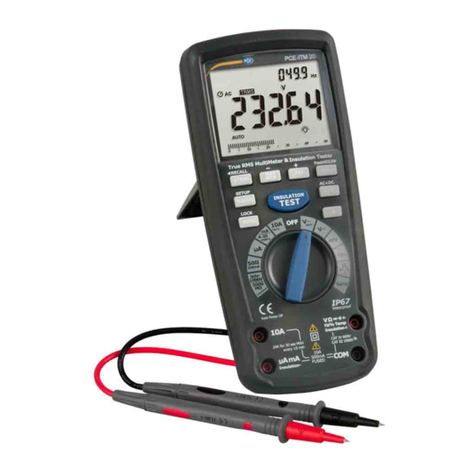
PCE Instruments
PCE Instruments PCE-ITM 20 user manual
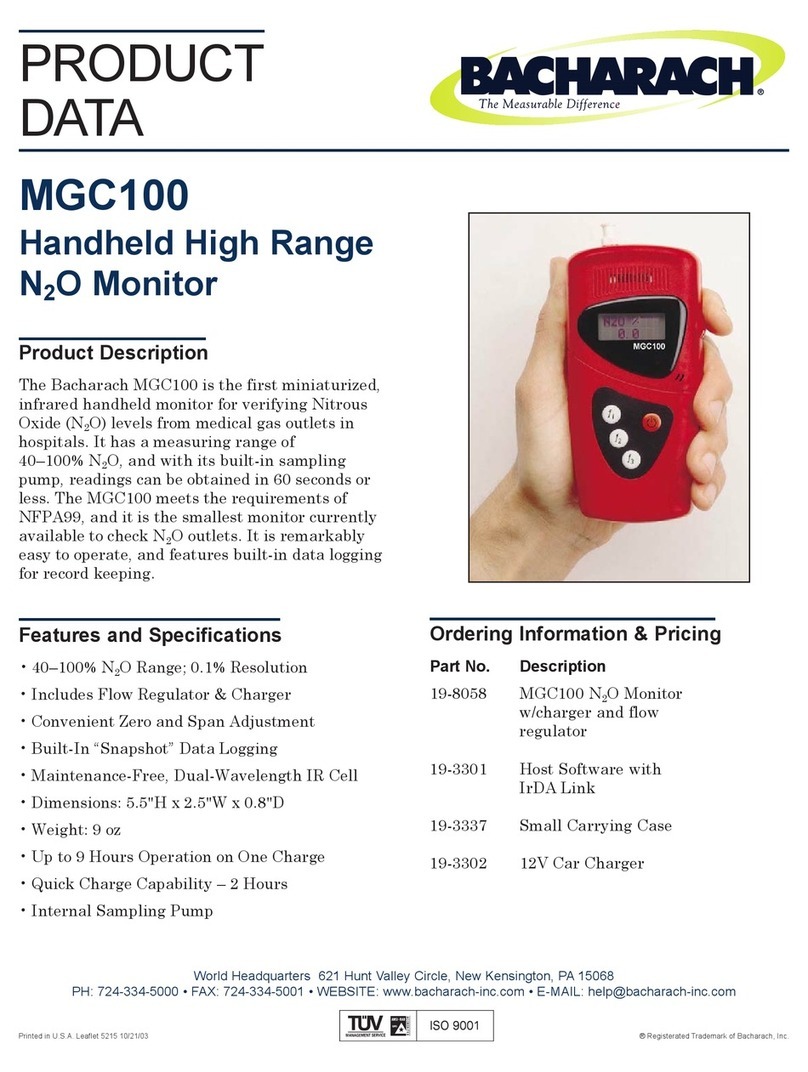
Bacharach
Bacharach MGC100 Product data

Grason-Stadler
Grason-Stadler gsi AUDIOSTAR PRO Instructions for use
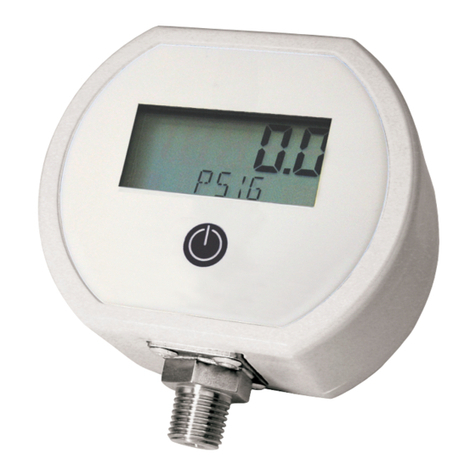
Meriam
Meriam MGF16BN-30V15PSIG manual
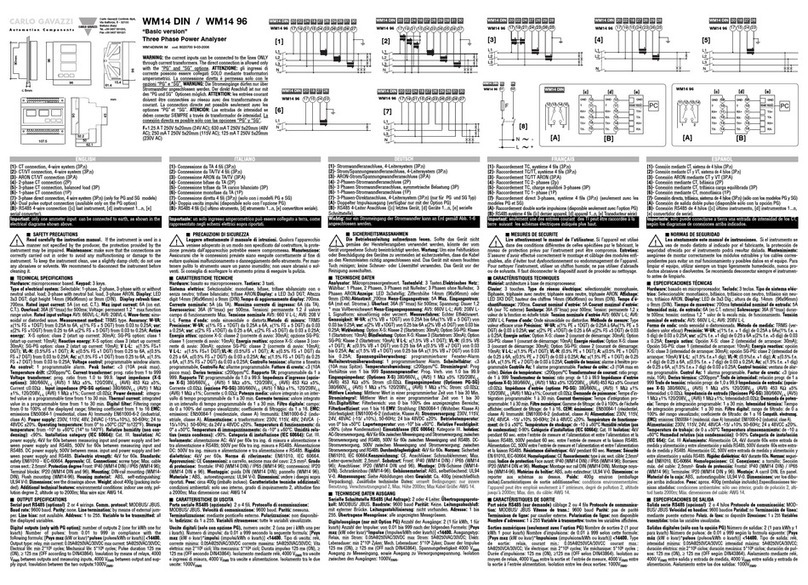
CARLO GAVAZZI
CARLO GAVAZZI WM14-96 - PROGRAMMING instruction manual
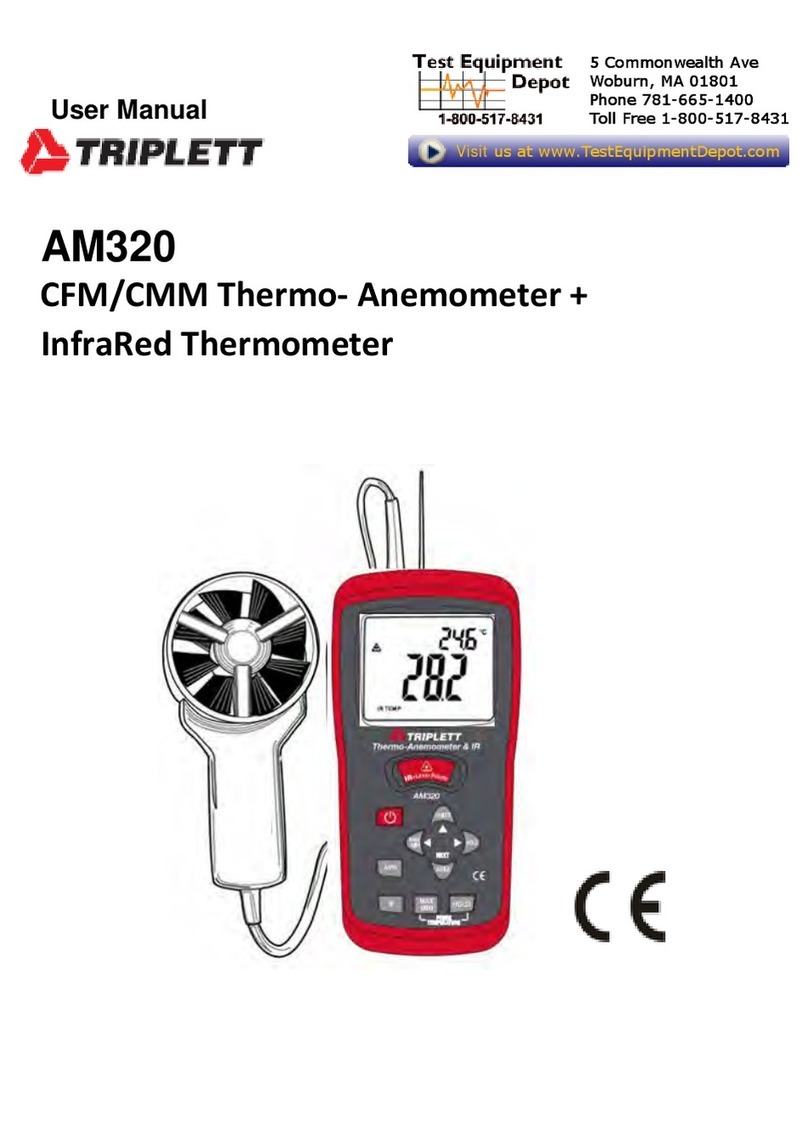
Triplett
Triplett AM320-NIST user manual
